
Perspective on the River: Fly Fishing in Montana with Eduardo Garcia
Garcia, founder and “Emperor of Flavor” of food company Montana Mex, takes us on a fishing trip with some hidden gems along the way.
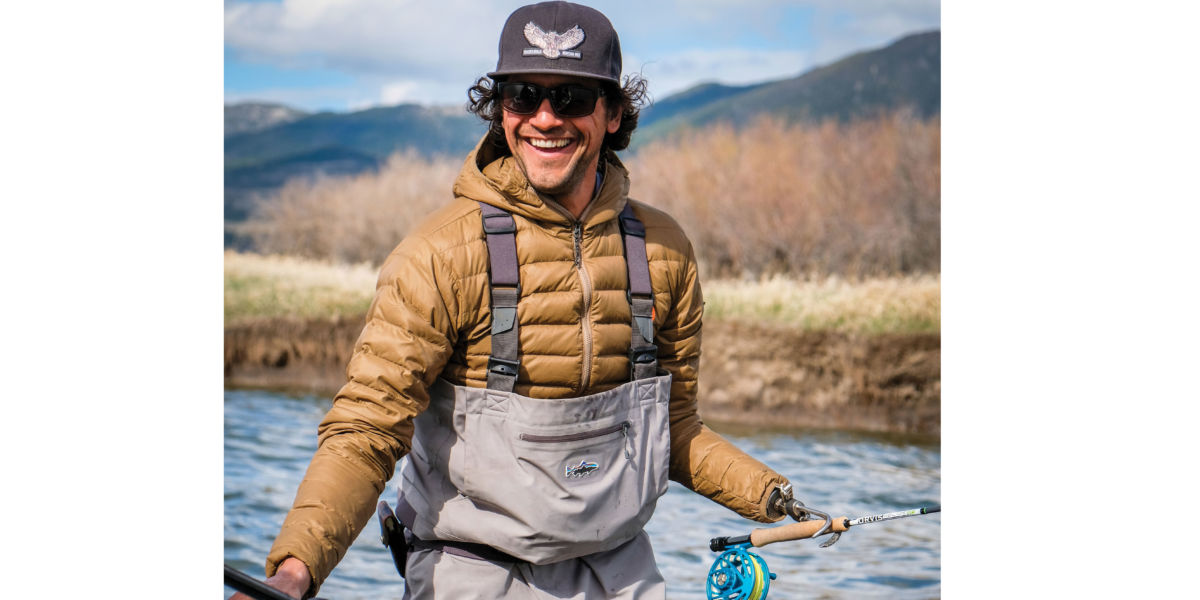
Thomas J. Story
With a flick of his wrist, Eduardo Garcia slingshots the bait meticulously fastened to his fly-fishing rod 40 feet upriver. The flexible, antenna-like rod catapults the weighted line with ease. Standing knee-deep in Montana’s Madison River, Garcia lands his cast with precision in a patch that, just moments before, was brimming with surfacing trout enjoying a feast of ghost flies.
Each bank of the river reverberates with a chorus of red-winged blackbirds, their song a symphony joined by the soothing, ever-present rush of the Madison. Beyond one bank, an expansive grassland stretches for miles until abruptly confronted by snow-capped peaks that loom over a distant herd of white-tailed deer in full gallop from an unseen instigator. On the other, the gurgling croak of a raven announces the predator’s robbery of a large goose egg it carries away in its rigid beak. Perched atop a tree downriver, the unmistakable form and contrasting colors of a bald eagle, its head oscillating in surveillance of its domain. Around every bend, the rhythm of life and death carries on in the same uninterrupted dance that has graced Earth since the beginning, each plant and animal woven together in the primordial pursuit of surviving the day.
There is unmatched beauty in this natural, almost ethereal, existence, one that puts me in a trance broken only by the promising splash of disturbed water. The mountain whitefish at the end of Garcia’s line flails wildly until the chef, balancing the fish between his hand and prosthesis, unfastens the catch and places it in a net. Kneeling into the water, Garcia cleans and guts the fish, using the clasping pair of hooks at the end of his carbon fiber limb to stabilize it. He intends to make it our lunch tomorrow. A life is taken for sustenance. The dance goes on.
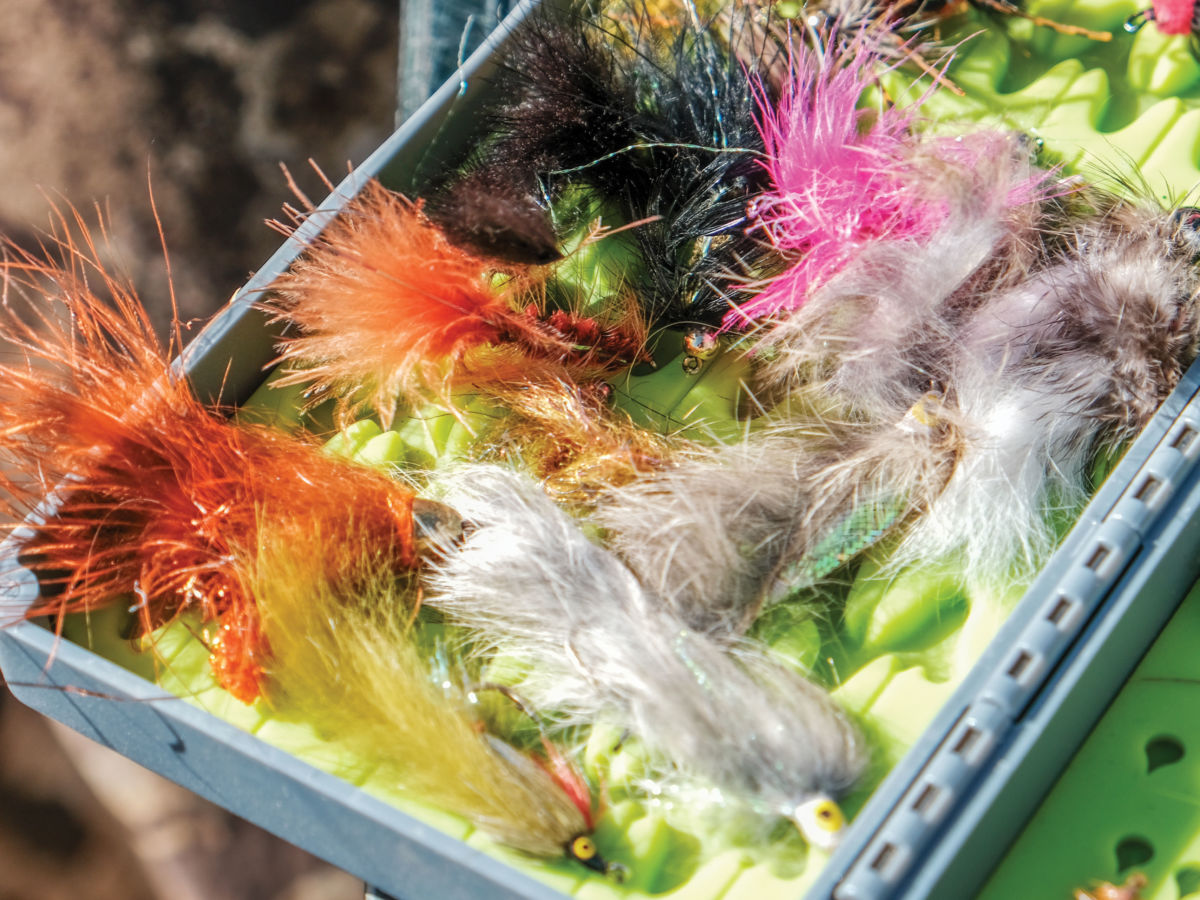
Thomas J. Story
Garcia, until now, was a figure I knew only through social media and the soul-stirring documentary Charged: The Eduardo Garcia Story, which recounts his recovery from the one-in-a-million accident that cost him much of his left forearm. Those platforms provided adequate context for understanding his well-established status as a renowned cook who spent a decade as a peripatetic yacht chef, an avid outdoorsman who may hunt big game one day and bake a batch of banana bread the next, a motivational speaker, and the founder—or “Emperor of Flavor”—of the food company Montana Mex.
Our first day together begins as an irresolute Montana teeters between Jack Frost’s last legs and irrefutable evidence of warmer seasons. Winter’s lingering snowpack lines many of the nearby peaks and rolling hills, some the result of a storm that delivered fresh powder just days earlier.
“Mother Nature keeps us on our toes,” Garcia acknowledges.
Fortune, however, favors us today. We rendezvous early, the lavender-hued mountains that encircle Bozeman glowing gently. It is here I hope to learn about the man behind the documentary, to better understand and share, as Garcia calls it, his “stoke,” an infectious zeal for living so many of us are prone to abandoning in our youth.
A necessary coffee detour delays our hourlong drive southwest toward the small town of Ennis. The ride is mesmerizing. Billowing hills and crests envelop us. An inconceivably vast sky welcomes a terrifically colossal sun that shepherds clouds across the blue expanse. It is a wild place existing outside of time, ostensibly undisturbed by the tampering of our species.
“This is my ocean,” Garcia says, acknowledging the sights he has called home since 1986, when he moved to Montana from the Los Angeles suburbs with his mother, sister, and twin brother, Eugenio. Garcia’s father, after leaving to return to his home in Mexico when the twins were just three months old, reunited with the family when Eduardo was a teenager.
With three children to raise on her own, Garcia’s mother, a Montessori teacher and member of the L.A.-based spiritual community the Church Universal and Triumphant, moved the family alongside hundreds of other members to Montana, where the church had, years earlier, purchased 12,000 acres adjacent to Yellowstone National Park.
“We didn’t have a deep cultural social blueprint at that young age, so when we moved to Montana, we were still absorbing and embracing the new, and there was enough room in our foundational makeup to let Montana be pretty formative,” Garcia says. “We just naturally took to living in the mountains. The strip mall became the pine tree forest out back. The beach was the river. We still went into town and went bowling and the movie theater every now and then, but our neighborhood became the creeks, the riverbanks, the forests and woods. It was just what everyone here was doing.”
The years that ensued were anything but serene. Garcia was kicked out of nine different schools—including preschool—for disruptive behavior. He began drinking and using drugs, prompting a decision to enroll in a military school in New Mexico. But after being expelled yet again, a rambunctious Garcia returned to Montana, where he remained until his eventual acceptance into a Seattle culinary school.
Through each detour, it was a deep connection to Montana and the outdoors that anchored Garcia. And it was that same appreciation that, a decade ago, led him to embark on a solo excursion that would change his life forever.
In October 2011, Garcia was on a routine hike in Montana’s backcountry near Paradise Valley, where we plan to spend our second day together, when he came across a curious steel barrel. The scene was an aberration, but was made even more eccentric by the sight of a dead bear carcass resting inside the drum. Prompted by a childlike inquisitiveness, “I took out my knife to touch it,” Garcia says. “Lights out.”
When he regained consciousness, Garcia was nearly paralyzed on the forest floor. What he believed to be a dream those initial moments proved to be anything but. Making contact with an unmarked power line had throttled Garcia with 2,400 volts of electricity that burst through his body, tearing cavernous holes into his scalp, arms, and legs, and searing the flesh from much of his torso.
Miraculously, the blossoming chef, then nearly 30 years old, got to his feet and stumbled roughly three miles until he found someone who could phone emergency services. He was airlifted to the burn treatment center in Salt Lake City, Utah, where doctors phoned close friends and relatives to suggest they say their goodbyes.
Death, however, was not yet ready to receive Garcia. A series of operations—skin and muscle grafts, and the amputation of his left forearm—ensued over the course of 50 days in the intensive care unit. To compound matters, doctors monitoring Eduardo’s rehabilitation informed him following a routine scan that they had discovered a mass. Garcia’s rehab would have to be put on hold while he underwent chemotherapy to treat stage two testicular cancer.
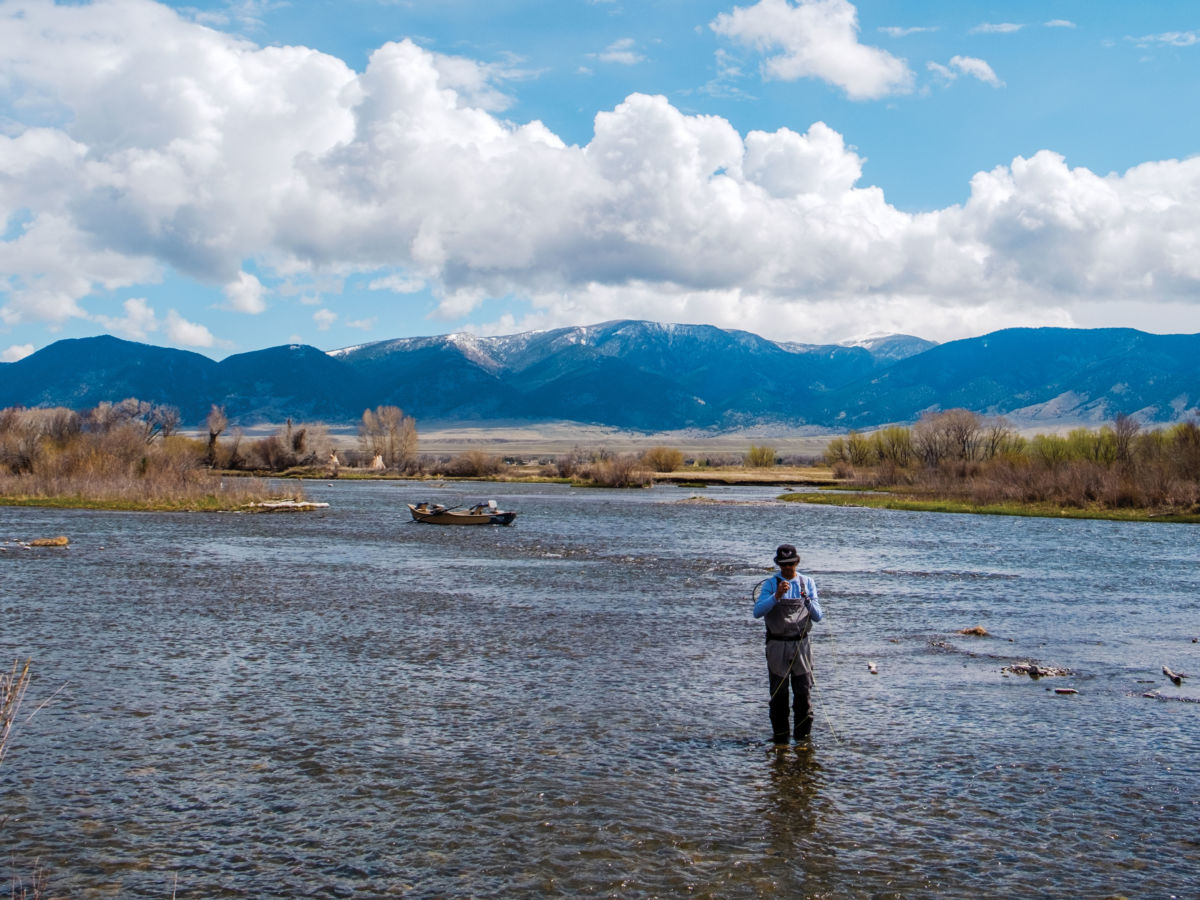
Thomas J. Story
A full day of fishing the Madison leaves us shivering, damp, and ravenous, so we retreat to Ennis to refuel on burgers and beers. Gravel Bar beckons, its wood paneling, wood bar, wood seating, wood everything illuminated by the soft glow of incandescent bulbs and sports on TV. A waitress running sprints between tables stops momentarily, points us in the direction of an empty booth, then scurries away toward the next collection of patrons.
I anticipate a brief stop, but accompanying a character as alluring as Eduardo hardly encourages transience. Garcia is a wellspring of indefatigable curiosity about those in his company, a trait complemented by his welcoming demeanor, soft voice, and kind eyes that inspire overt reflection of the intimate. I am no exception.
At our booth Garcia opens up about the death of his father, Manuel, in 2017. His perspective is enlightening, a celebratory examination of mortality that emboldens me to share the particulars of my own father’s passing in 2019. I tell my story, surprised to hear what would typically be cagey utterances flowing freely in the presence of total strangers. Garcia’s eyes are alight, and as I conclude, he clasps my hand in celebration of my dad.
“Yeah, Jon!”
“My father became a dialysis patient in 2015,” he continues. “But at some point, the relief just simply doesn’t outweigh the ever-present pain. That came after two years.”
Garcia’s father was a fourth-generation fisherman and hunter, and much like his son, Manuel knew death. Beyond the fact that Manuel lived his entire life with a hole in his heart, the elder Garcia had always been surrounded by that inherent order of family, friends, animals. Manuel was “deeply connected to that natural cycle,” Garcia says. “Death was there, but so was his love for life.”
“When it came time to start talking about his mortality, it was really no different than he would approach a broken wing on a bird,” he says. “Let’s take care of it and see if it can survive. It was that comfortable for him. But at some point, he essentially said, ‘I think I’m ready to go.’”
In the twilight of his voyage, Manuel would often be chaperoned by his twins for fishing trips on the Yellowstone River, where Garcia jokes his father would spend every day as long as the weather remained above 50 degrees.
As they had always done, they openly discussed what awaited their father.
“We knew it was going to hurt,” Garcia says. “I remember fishing and just emotionally saying, ‘It’s not that I want you to stay around for forever, because I see how much pain you’re in, but I’m going to miss you. I’m really going to miss hanging out with you.’ You end up realizing that you’re not really feeling their pain of sorrow, you’re just admitting your own.
“And in that moment, he just so bravely and naturally was like, ‘When you miss me, just come here, come fishing, because I’ll be right here. When you feel that sun kiss your face, that’s me. When the wind gets in your hair or wakes you up, that’s me, too.’ There’s a lot of encouragement to be found in someone that doesn’t surrender to loss. He wanted us to celebrate. He’ll always be around.”
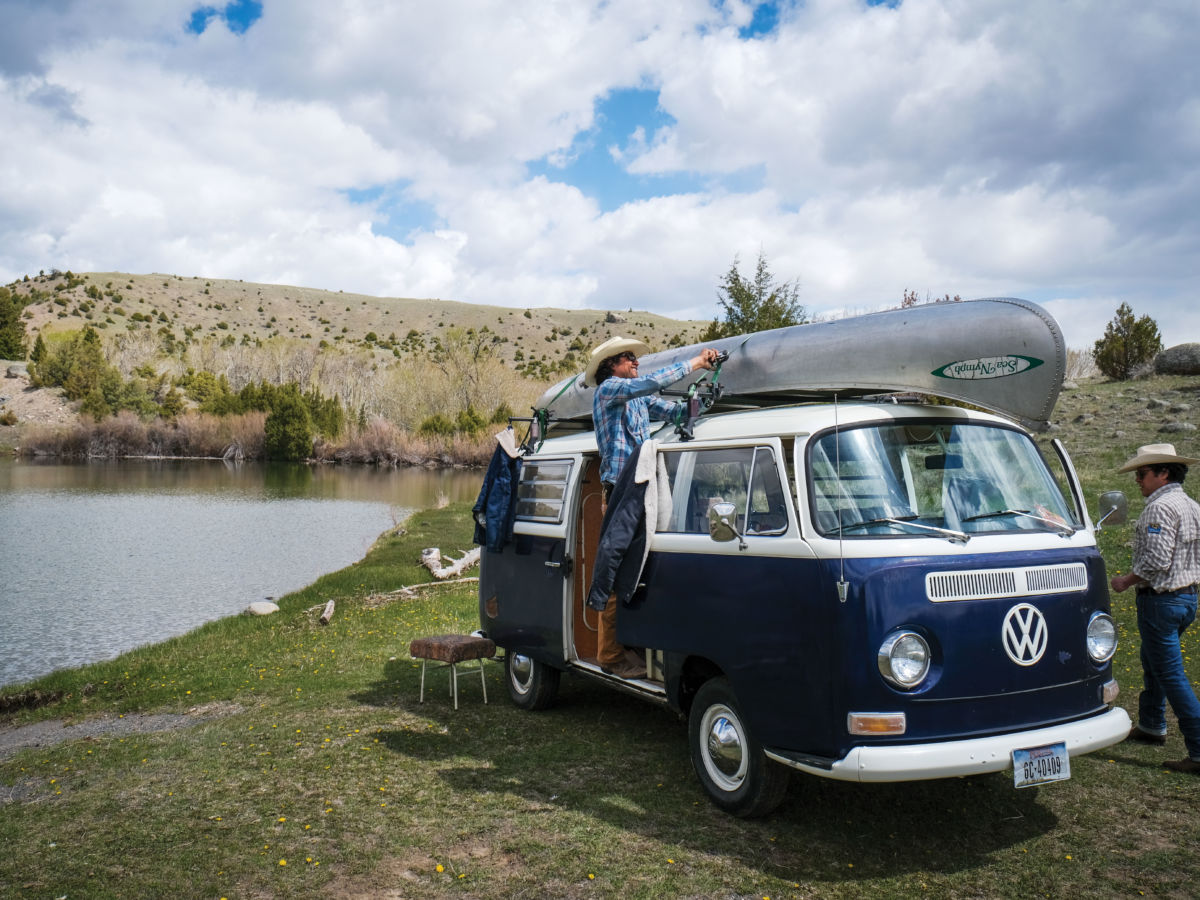
Thomas J. Story
For our last day in Big Sky Country, Garcia tells me to meet him and Eugenio, founder of Cannabis Now magazine, at Wild Crumb bakery, a must for pastry enthusiasts flocking to Bozeman. Today’s itinerary begins with a drive to Paradise Valley. We’re just south of Livingston when we turn onto a dirt road that winds along bubbling creeks and through dense forests before it opens to a vista of jagged summits and swollen green hills cut by the meandering Yellowstone River. The scene leaves little to interpret as to how the valley got its moniker.
“This is home,” Garcia says, pulling his blue and white 1969 Volkswagen Bus onto a shoulder. A wiry fence on one side is bare save for the “Grizzly Bear Area” warning sign adorning one of its posts. About 200 yards away, a young moose pauses mid-dash to peer at us skeptically.
The intoxicating medley of sights and smells, and the fluidity with which Garcia moves among it all, is astounding. It’s hard to fathom that just 10 years ago, this man who calls this ocean of land his home clung to the pedestrian sight of a park hill as a catalyst to escape the boat of Charon.
That hill, seen from the window of the Salt Lake City hospital room where Garcia spent seven-plus weeks, played host to all manner of hikers, joggers, cyclists, and dog walkers. The sight tantalized a bedridden Garcia.
“I’ve never looked at a piece of land for that long and not touched it with my eyes and feet,” he says. “The day I got discharged, we walked up that hill as a family and had a good cry.”
Garcia exited the intensive care unit 51 days after his accident. He’d left behind sections of muscle, ribs, skin, and one of his hands. The mind of the bilateral human was forced to come to terms with a unilateral existence. Despite myriad obstacles strewn across the road ahead, including receiving treatment for—and beating—cancer, the transformative physical experience yielded renewed perspective and an unquenchable thirst for life.
Prior to his injury, Garcia says, he would have been characterized as a “caring, loving person, embodied by ambitious energy. That resulted in a front-loaded pursuit of making sure I succeeded, with ‘I’ the leading word. I think touching the void, so to speak, acted as a reset on the compass north.
“My mom noted early on in my post-injury days that there was perhaps a lesson in humility that was simply a necessary part of future improvement. That’s a profound thing for a mom to say to a son in the ICU, but it’s the type of hard, loving truth that comes from a wise person and mentor.”
Very little time elapsed post-injury before Garcia’s desire for the familiarities of cooking and the outdoors began laying the groundwork for the next chapter of his life.
“Our bodies know what they need,” he says.
And while these endeavors were therapeutic, the man often referred to as the “bionic chef” was just getting to know a self he was unaccustomed to. No longer was Garcia motivated by the individual accolades that drove him in the past. There was a freedom to dig harder for the group at large. To embrace community and the humility to ask for help.
There was also a revived emphasis on cooking over a campfire, a method that any number of other chefs employ to great success. For Garcia this wasn’t merely a culinary choice, but a healing return to the wild and an uplifting message he could spread.
“Fire connects us to this timeless part of our human culture. It’s literally in our DNA,” he says. “Your ability to stay warm, survive, flourish is greater. And from a gustatory and gastronomic sense, it’s the best of both worlds. Your eyeballs are eating, your nose is eating, and of course, your mouth is ready to love the flavor. It’s not just the food. It’s the setting, the ambience, the complete story. The perfection is in the dance.”
The famed Story Ranch in Paradise Valley is where Eduardo and Eugenio finally stop the VW. In front of us is one of their favorite fishing holes, a small lake on the property Garcia says he used to sneak onto all the time as a young man.
“Eventually, I figured I should probably just make friends with the owners,” he laughs.
The brothers unload Garcia’s silver canoe, wooden oars, and fishing gear from the roof of the VW and set it down next to the lake.
The past 10 years have been a whirlwind for Garcia. The accident. Losing a father. Running a business. TV appearances. Storyteller. But now, on the verge of 40, scenes like this, he says, make him want to slow down.
“We have really got to make time for these moments,” he says. “It’s so easy to roll past them. We have got to protect these opportunities and make room for them.”
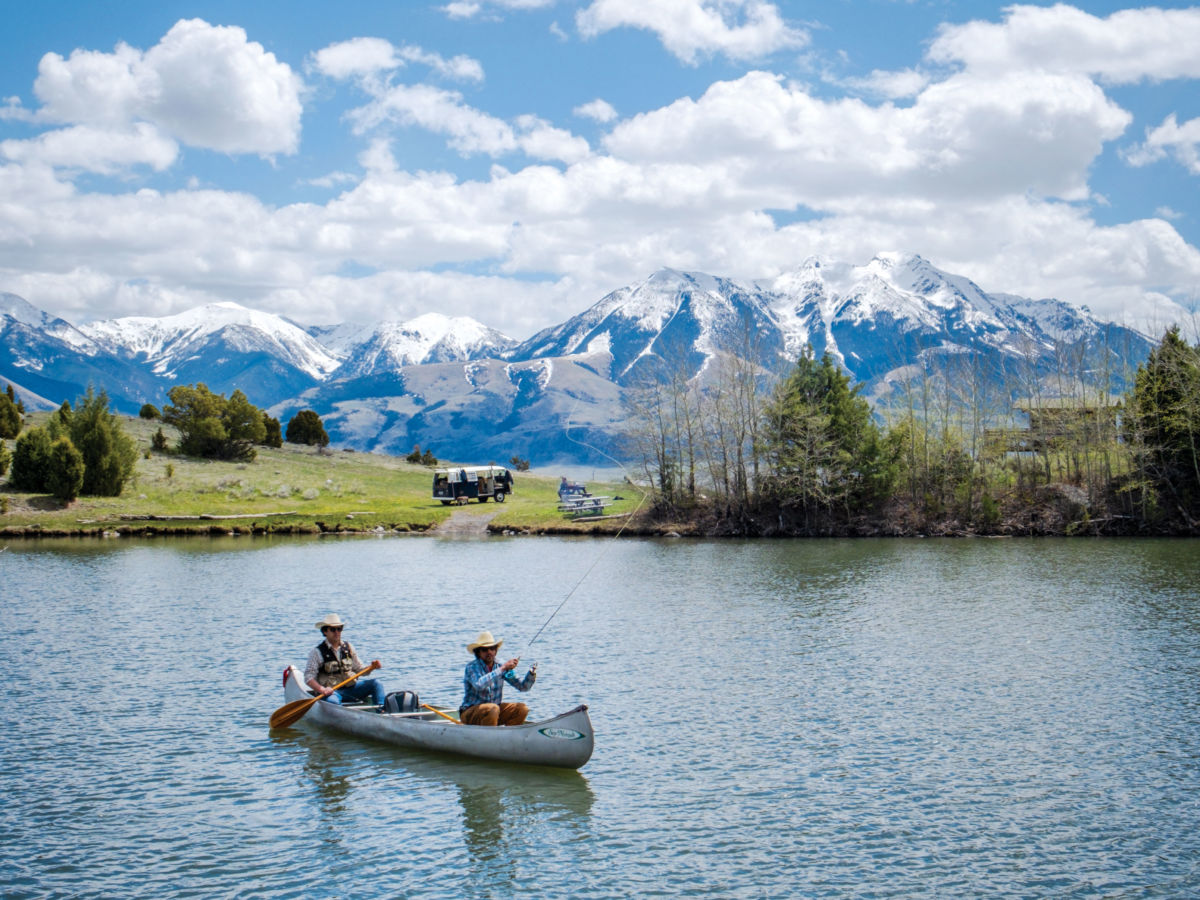
Thomas J. Story
Garcia builds a crackling fire to heat portions of our lunch, then paddles out onto the lake with Eugenio. A steady breeze architects striated ripples across the water’s surface, blurring the composition of cerulean sky and velvety clouds that were reflected on its calm canvas moments earlier.
I look on in a trance, the dancing fishing line tied to the conductor’s baton pirouetting and snapping with each leisurely cast.
“AHHHH-HA-HA-HA-HAAAA!”
A mariachi’s grito, echoing distantly like a bridge between dream and reality, blares from the VW’s stereo in a call to join the ensemble.
A half-hour elapses. Perhaps longer. The brothers’ congruous presence among the lakes and undulating hills is bewitching.
They eventually pull the canoe ashore and Garcia returns to cook over a fire. The catch from the previous day is part of a Montana Mex–inspired smorgasbord he’s prepared. Mild chili-and-lime watermelon, campfire grilled corn, orange and cilantro grilled chicken, “Papi’s Rice” (just the way Manuel made it), and, of course, some Montana tequila.
The stillness of the day offers opportunity for more reflection on the past decade, a period Garcia hopes will inspire others to “kindle that fire to really celebrate life,” and yet it is seldom his past, despite its extraordinary table of contents, that holds his attention.
In popular culture we often hear the word “legacy” uttered alongside laurels stemming from the self-centered pursuits of the deceased. But just as his father so often spoke of a passion for life and inescapable fate beyond the scope of the individual, Garcia’s story, and eventual memory, is one he hopes endures long after he’s gone.
“This doesn’t end when I’m done,” Garcia says to me. “We leave this mark, and if we craft it properly, we transfer everything we’ve learned, everything we’ve built, everyone we’ve loved, to others. So, when we do expire physically, our spirit is not lost. It just continues on pollinating others around us.
“What if we all woke up believing that our spark could be transferred to others? That makes me want to try harder. There’s so much that can be done to live a life on fire.”
Papi’s Pescado Frito
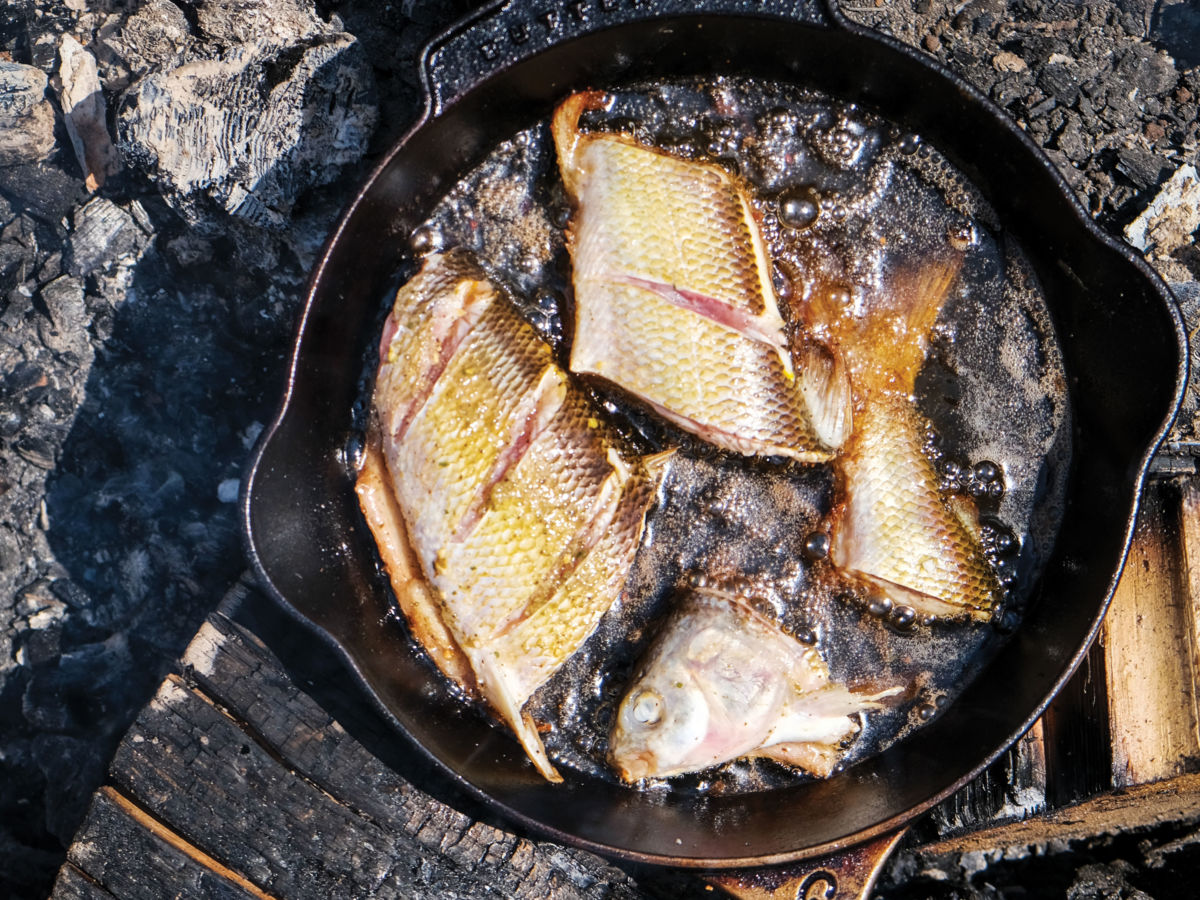
Thomas J. Story
“Absolutely my favorite way to cook fish for fish tacos is pescado frito,” says Garcia. “My father taught my brother and me, as his father taught him—six known generations of fishermen! Any whitefish like snapper or bass will work fine. Our family favorite is the Rocky Mountain whitefish, a member of the trout family that can be sustainably acquired throughout its native home in the Rocky Mountains. The fish is scaled, scored, and rubbed with sea salt and lime before being fried whole in a sea of crushed garlic. The crispy meat is pulled and wrapped inside a warm corn tortilla with habanero salsa. This is Papi’s Pescado Frito, and once you’ve eaten one with your hands it becomes something never to be forgotten.”
Recipe: Papi’s Pescado Frito
This Came from the 2021 Waters of the West Issue—Read It Here!
Get one year of Sunset—and all kinds of bonuses—for just $24.95. Subscribe now!
